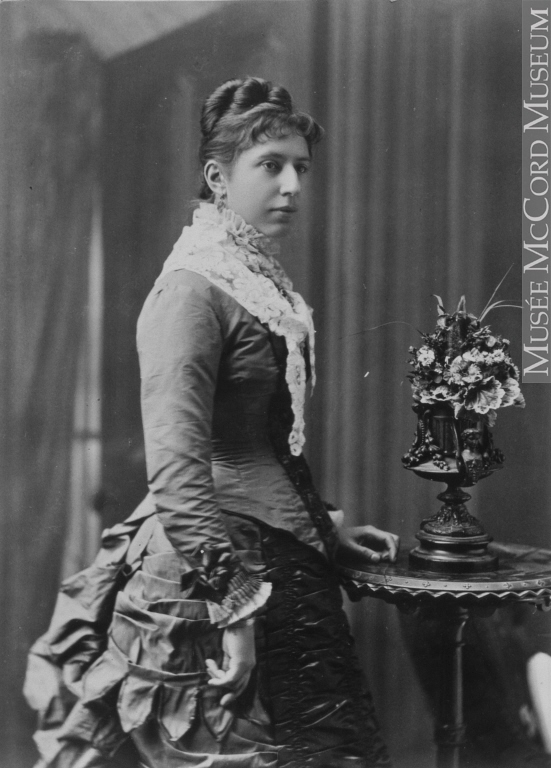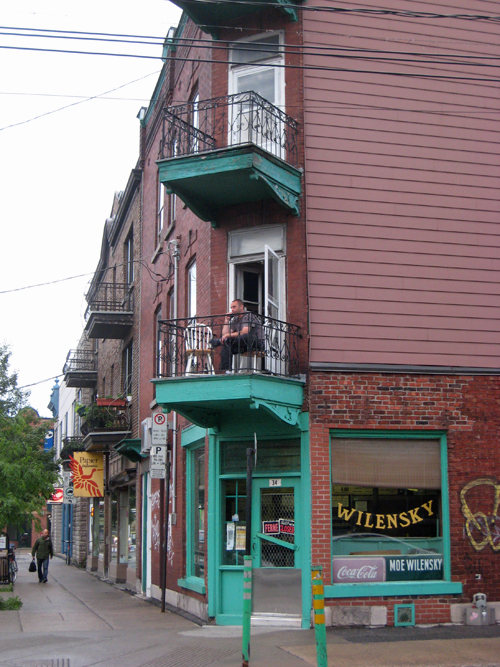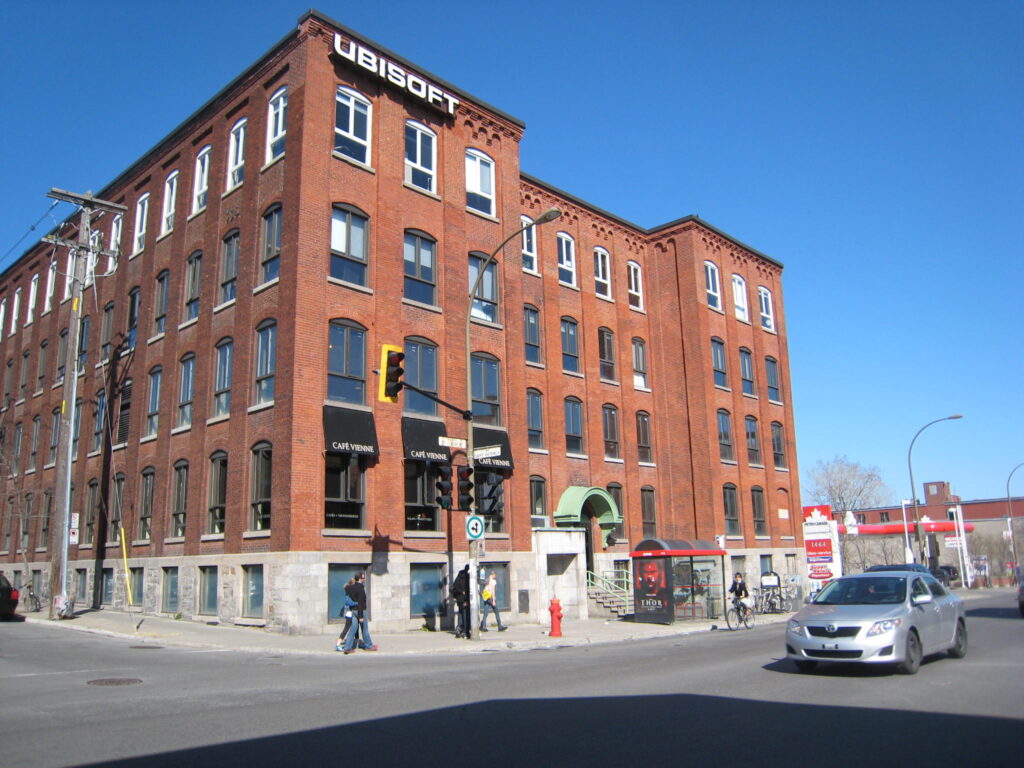When Montreal landowner Stanley Clark Bagg (1820-1873) wrote his will in 1866, he tried to ensure that his wife, son and four daughters would be financially secure after his death. In this concern he was similar to many 19th-century Montreal husbands and fathers, 1although he was in a better financial situation than most to make sure that this happened. He probably would have been surprised, however, to discover how his widow and daughters became actively involved in the family business.
Stanley Clark Bagg (henceforth referred to as SCB)2inherited extensive properties on the Island of Montreal from his grandfather John Clark.3 During his lifetime, he made money by leasing and selling that land. He planned his will so that these properties would generate income for three generations of his family. The will stipulated that, when lots from his Estate were sold, the new owner would have to pay a rental fee (called a rente constituée in French) on an ongoing basis. 4 These sums would benefit his widow, children and grandchildren.
However, society was changing in Montreal and rente constituée was an old-fashioned idea. Property laws in the province of Quebec were modernizing, especially after 1840 when the seigneurial system of land ownership that dated back to colonial New France disappeared on the Island of Montreal.
SCB’s family quickly realized that the rente constituée made land from the Bagg Estate less desirable than property that was not encumbered by such costs. In 1875, the provincial government passed legislation that allowed his descendants to sell the land freehold, without any obligations.5
This proved to be a wise move. At the time of his death in 1873, land belonging to the Bagg Estate was too far north of the actual city of Montreal to be highly desirable. It was located between the eastern slope of Mount Royal and the west side of Saint Lawrence Street (today’s Saint-Laurent Boulevard) north of Sherbrooke Street. By the early 1890s, the city’s suburbs were expanding and land belonging to the Estate of the late Stanley Clark Bagg began to be subdivided into residential lots.6
When his father died, son Robert Stanley Bagg (1848-1912) was just 25 years old and a newly graduated lawyer. He was suddenly thrust into the role of administrator of the Bagg Estate: effectively head of the family real estate company. In this role he seems to have relied to a great extent on the advice of his widowed mother, Catharine Mitcheson Bagg (1822-1914). Her brother McGregor J. Mitcheson, a Philadelphia lawyer, was an executor of SCB’s will and probably also provided advice.
One complication was that all five siblings were co-owners of the Durham House property where SCB had grown up. In 1891 they partitioned that property and each of the siblings became sole owner of a portion of the lots that had not already been sold off.7 Each sibling was then free to sell these lots.8
Each of SCB’s daughters signed a marriage contract when she married, making her property separate from her husband’s, however, a woman was required to have her husband’s consent when she signed a business document. For example, in 1897, a notarized lease began, “Dame Helen F.M. Bagg, wife separate as to property of Albert E. Lewis, real estate agent, and by her said husband party hereto present duly authorized …. “ 9

All four of the daughters developed an interest in the family real estate business that their brother was managing. They sometimes discussed which lots to sell, when and for how much. For example, in 1898, Katharine (Bagg) Mills wrote her brother: “Dear Stanley, I have seen my sisters and I think we all agreed that it would be well to sell the Villeneuve property if possible. The price to be asked, twenty five thousand dollars.”10
SCB’s widow was also still involved in decisions about the Bagg Estate some 27 years after his death. In 1900, Robert Stanley Bagg decided to retire from administering the estate. In response, Catharine Mitcheson Bagg wrote her son: “Dear Stanley, Acting upon your suggestion, I requested a family council and the Mills kindly invited all concerned to a little dinner…. We all came to conclusion that if McIntosh would accept the office of administration Bagg Estate, he would be the best man.”11 She went on to say that she planned to invite Mr. McIntosh to her house for a personal interview.
But the family member who demonstrated the most longstanding interest in the family’s real estate business was daughter Amelia Bagg (1852-1943), wife of 1) Joseph Mulholland and 2) Rev. John George Norton. She started a ledger in 1891 to keep track of lots that had originally belonged to John Clark’s Estate, including Mile End Farm and the Durham House property, as well as other parts of her late father’s estate.12 She quietly recorded property sales, prices and interest payments for 36 years.
Photo credit:
Miss A. J. Bagg, Montreal, QC, 1880, Notman & Sandham, 1880, II-58525.1, McCord Museum
Notes:
- Bettina Bradbury. Wife to Widow. Lives, Laws and Politics in Nineteenth-Century Montreal. Vancouver: UBC Press, 2011, p. 169.
- I refer to Stanley Clark Bagg as SCB in order not to confuse him with his father, Stanley Bagg (1788-1853), or his son, Robert Stanley Bagg (1848-1912).
- Henry Griffin, “Last Will and Testament of Mr. John Clark of Montreal,” 29 August, 1825, # 5989, Bibliothèque et Archives nationales du Québec.
- Joseph-Augustin Labadie, “Last Will and Testament of Stanley Clark Bagg, Esquire,” 7 July 1866, #156785. Bibliothèque et Archives nationales du Québec.
- “An Act to authorize the Executors of the will of Stanley C. Bagg, Esq. late of the City of Montreal, to sell, exchange, alienate and convey certain Real Estate with substitution in said will, and to invest the proceeds thereof.” Statuts de la province du Québec, 38 Victoria 1875, p. 474-477.
- Yves Desjardins, Histoire du Mile End. Quebec: Septentrion, 2017.
- John Fair, “Deed of Partition between Robert Stanley Clark Bagg and Dame Katharine S. Bagg, wife of Reverend William L. Mills, et al”, 10 Sept. 1891, #3100, McCord Museum, Bagg Family Fonds, B070/
- Katharine Sophia Bagg, Amelia Josephine Bagg, Mary Heloise Bagg and Helen Frances Bagg all engaged in the real estate business in their own names, primarily by leasing houses and selling lots. A search of their names in the “Quebec, Canada Notarial Records, 1637-1935” collection on www.ancestry.ca makes this clear. A search for their maiden names will bring up several dozen hits for each of them, including marriage contracts, sales, leases, loans and other records. In a few cases, the actual document has been digitized, but in most cases you can only view the notary’s index. See also Gail Dever, “How to order a notary record from the Quebec Archives after finding it in an index on Ancestry,” Genealogy a la Carte, Sept. 1, 2017, https://genealogyalacarte.ca/?p=20640. In a previous post, Gail explained how to find documents concerning your ancestors in Ancestry’s Quebec notaries collection. See http://genealogyalacarte.ca/?p=16551. To learn more about searching Quebec notarial records, see https://www.familysearch.org/wiki/en/Quebec_Notarial_Records
- O’Hara Baynes, Lease, 21 Jan 1897, #9938, Bibliothèque et Archives nationales du Québec.
- Katharine (Bagg) Mills, letter to Robert Stanley Bagg, February 25, 1898, McCord Museum, Bagg Family Fonds, B070/
- Catharine Mitcheson Bagg, letter to Robert Stanley Bagg, Oct. 6, 1900, McCord Museum, Bagg Family Fonds, P070/
- Amelia J. (Bagg) Mulholland. Ledger, 1891-1927. McCord Museum, Bagg Family Fonds, P070/B07.


